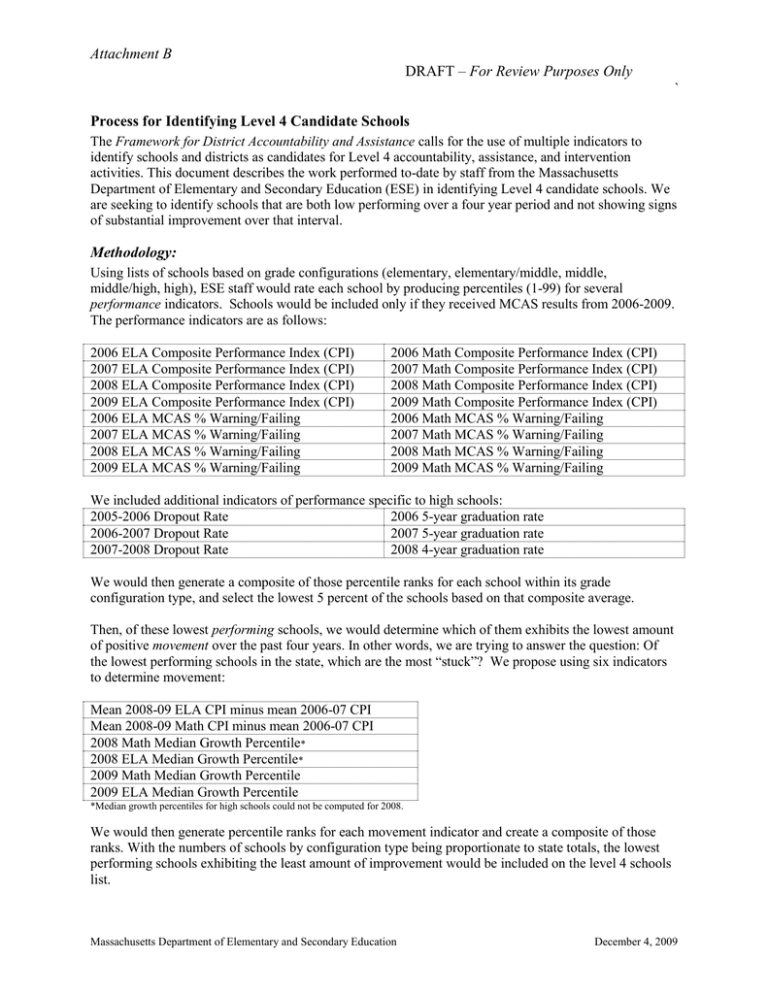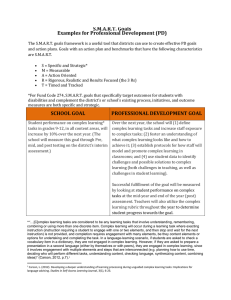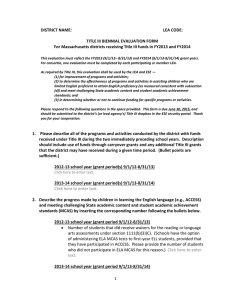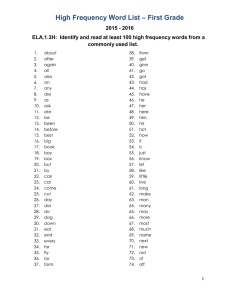item3 attachB
advertisement

Attachment B DRAFT – For Review Purposes Only ` Process for Identifying Level 4 Candidate Schools The Framework for District Accountability and Assistance calls for the use of multiple indicators to identify schools and districts as candidates for Level 4 accountability, assistance, and intervention activities. This document describes the work performed to-date by staff from the Massachusetts Department of Elementary and Secondary Education (ESE) in identifying Level 4 candidate schools. We are seeking to identify schools that are both low performing over a four year period and not showing signs of substantial improvement over that interval. Methodology: Using lists of schools based on grade configurations (elementary, elementary/middle, middle, middle/high, high), ESE staff would rate each school by producing percentiles (1-99) for several performance indicators. Schools would be included only if they received MCAS results from 2006-2009. The performance indicators are as follows: 2006 ELA Composite Performance Index (CPI) 2007 ELA Composite Performance Index (CPI) 2008 ELA Composite Performance Index (CPI) 2009 ELA Composite Performance Index (CPI) 2006 ELA MCAS % Warning/Failing 2007 ELA MCAS % Warning/Failing 2008 ELA MCAS % Warning/Failing 2009 ELA MCAS % Warning/Failing 2006 Math Composite Performance Index (CPI) 2007 Math Composite Performance Index (CPI) 2008 Math Composite Performance Index (CPI) 2009 Math Composite Performance Index (CPI) 2006 Math MCAS % Warning/Failing 2007 Math MCAS % Warning/Failing 2008 Math MCAS % Warning/Failing 2009 Math MCAS % Warning/Failing We included additional indicators of performance specific to high schools: 2005-2006 Dropout Rate 2006 5-year graduation rate 2006-2007 Dropout Rate 2007 5-year graduation rate 2007-2008 Dropout Rate 2008 4-year graduation rate We would then generate a composite of those percentile ranks for each school within its grade configuration type, and select the lowest 5 percent of the schools based on that composite average. Then, of these lowest performing schools, we would determine which of them exhibits the lowest amount of positive movement over the past four years. In other words, we are trying to answer the question: Of the lowest performing schools in the state, which are the most “stuck”? We propose using six indicators to determine movement: Mean 2008-09 ELA CPI minus mean 2006-07 CPI Mean 2008-09 Math CPI minus mean 2006-07 CPI 2008 Math Median Growth Percentile* 2008 ELA Median Growth Percentile* 2009 Math Median Growth Percentile 2009 ELA Median Growth Percentile *Median growth percentiles for high schools could not be computed for 2008. We would then generate percentile ranks for each movement indicator and create a composite of those ranks. With the numbers of schools by configuration type being proportionate to state totals, the lowest performing schools exhibiting the least amount of improvement would be included on the level 4 schools list. Massachusetts Department of Elementary and Secondary Education December 4, 2009 Attachment B DRAFT – For Review Purposes Only ` Process for Excluding Underperforming and Chronically Underperforming Schools from Continued State Monitoring Until 2009, the Board of Elementary and Secondary Education has voted on whether or not certain schools were underperforming. If such schools failed to make progress after two years, the Board could then vote on whether the school was chronically underperforming. However, proposed regulation changes in 2009 would lead to the development of a new method for identifying struggling schools (so-called “Level 4 Schools”). This new method would identify some of the schools that were previously on the underperforming and chronically underperforming list, but also call attention to some schools that had gone unidentified. In order to make a seamless transition to this new method, we would review the list of underperforming and chronically underperforming schools to determine which of those that did not make the Level 4 list can be relieved of all accountability designations, and which can be subject to continued state monitoring. An underperforming or chronically underperforming school would be excluded from continued state monitoring if one of the following statements about their performance applies: 1. A school is excluded if its average Composite Performance Index in both ELA and mathematics over the last 4 years is higher than 20 percent of all other schools of the same type (elementary, middle, etc.). 2. A school is excluded if its average performance indicators (the same as in the methodology for level 4 schools) over the last 4 years are higher than 20 percent of all other schools of the same type (elementary, middle, etc.). 3. A school is excluded if its average movement indicators (the same as in the methodology for level 4 schools) over the last 4 years are higher than 80 percent of all other schools of the same type (elementary, middle, etc.). We estimate that applying the above methodology will result in identifying up to 60 schools in Level 4. Massachusetts Department of Elementary and Secondary Education December 4, 2009



